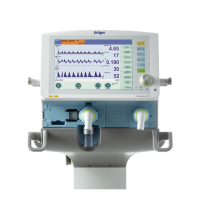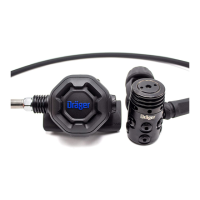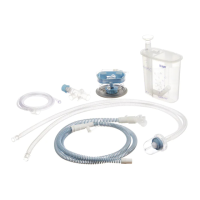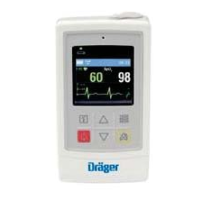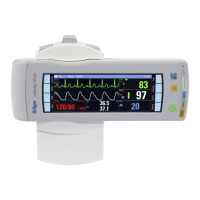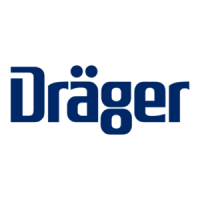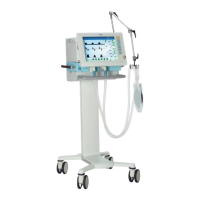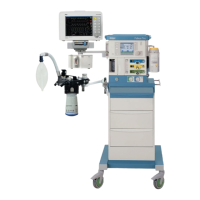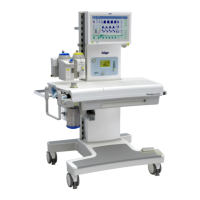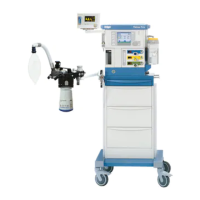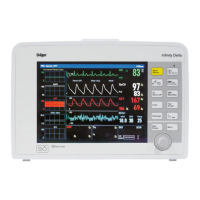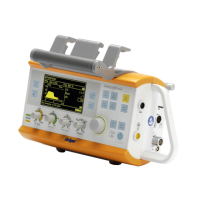Description
104
BIPAP (optional)
Biphasic Positive Airway Pressure
The BIPAP ventilation mode is a pressure-controlled/time-
cycled ventilation mode in which the patient can always
breathe spontaneously. BIPAP is therefore often described
as a timed alternation between two CPAP levels.
*
The time-cycled change of pressure produces controlled
ventilation corresponding to the pressure-controlled ventilation
PCV. However, the constant option of spontaneous breathing
allows the transition from controlled breathing to independent
spontaneous breathing to take place smoothly over the course
of the weaning phase, without requiring any change in the
ventilation mode. To adapt easily to the patient's spontaneous
breathing pattern, the change-over from expiratory pressure
level to inspiratory pressure level, and also the change-over
from inspiratory pressure level to expiratory pressure level, are
synchronised with the patient's spontaneous breathing.
The frequency of the change-over is kept constant, even with
patient synchronisation, by defining a trigger time window with
a fixed time constant.
This smooth adaptation to the patient's spontaneous breathing
requires less sedation, so that the patient returns to
spontaneous breathing more rapidly.
As in all pressure-controlled ventilation modes, the patient is
not prescribed a fixed tidal volume (VT). The tidal volume
results principally from the pressure difference between the
settings for PEEP and Pinsp and also lung compliance.
The display of the tidal volume measured on expiration, VTe, is
used to set the required difference between the two pressure
levels. Any increase in this difference will cause an increased
BIPAP ventilation stroke.
Changes in lung compliance and airways, as well as active
'fighting' by the patient can lead to changes in tidal volume.
This is a desired effect in this ventilation mode.
With the knowledge that the tidal volume, and therefore the
minute volume, are not constant, the alarm limits for minute
volume must be adjusted with care.
* Bibliography (1), (2), (3), page 108.
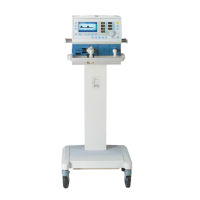
